Phonics Teaching Resources
Make teaching phonics easy with printable phonics worksheets, activities, games and more designed for elementary ELA and ELAR teachers.
This collection of curriculum-aligned teaching resources has been carefully reviewed by our expert teaching team to make sure every resource is classroom-ready — so we can make your lesson planning easier!
New to teaching phonics, or just looking for new ways to engage your students? Read on for a primer from our teacher team!
What Is Phonics?
You've likely heard the word "phonics" thousands of times throughout your own education and maybe on one of those old as from the '90s. But what is phonics, exactly?
Phonics is technically defined as the systematic instruction of the relationships between letters and sounds in written language. But that's a mouthful, isn't it? More simply, phonics is the word we use to refer to the method of teaching reading by focusing on the relationship between written letters and the sounds they represent.
In phonics, kids learn how to decode written words by recognizing the sound-symbol correspondence.
Phonics vs. Phonemic Awareness
When we start talking about letters and their sounds, we start to wander into phonemic awareness territory. So what's the difference?
The words phonics and phonemic are similar, and the two concepts are — surprise, surprise — related. But there are key differences.
Phonemic awareness is essentially the ability to identify and manipulate individual sounds — aka phonemes — in spoken language. It's those individual sounds and their correspondence to the letter symbols that can be used by kids to then decode written words.
So students learn to recognize the individual sounds of spoken language (phonemes) and how these sounds can be represented by letters (graphemes) in written language. Then they apply this knowledge to decode written words by understanding the sound-symbol correspondence.
Consider this example:
- Let's say your student can identify the separate sounds in a spoken word such as "cat" (i.e., /k/ /a/ /t/). That's phonemic awareness.
- Now let's say you're teaching that same student that the letter "c" represents the /k/ sound and that the letter "a" represents the /a/ sound, and that these sounds combine to form the word "cat." That's phonics!
How to Teach Phonics
OK, you probably already know that phonics is all about teaching word recognition via grapheme-phoneme associations and letter-sound correspondences.
It’s a means of teaching early readers the pieces that make up a word so they can blend them together to decode the English language as readers and writers.
But how do you teach it?
In the earliest stages, phonics instruction typically begins with teaching students the most common letter-sound relationships. You start with consonants, then move on to vowels, then consonant blends.
Students then learn to sound out words by decoding the letters and blending the sounds together to form words.

Phonics Vocabulary Terms
The English language system is one of the hardest to teach and learn, so how do you teach phonics? Let’s start with the phonics vocabulary.
- For starters, there are 26 letters that create approximately 44 phonemes, the word for the individual speech sounds that make up words. Put together, phonemes make words. OK, easy enough, right?
- Well, these phonemes can be written in over more than 200 different letter combinations, known as graphemes. Graphemes can be made up of 1 letter (such as “p” in “pig”), 2 letters (such as “gh” in ghost), 3 letters (such as “igh” in night), or 4 letters (such as “ough” in rough).
- Then there are digraphs or two letters that work together to make one sound — such as “ph” in graph. But wait, isn’t that a grapheme? Yup, a digraph is a type of grapheme.
- So is a trigraph, trigraphs, aka three letters that work together to make one sound, such as “dge” in edge.
- And if you’re teaching phonics, you can’t forget dipthongs, the name for a sound that is formed by the combination of two vowels in a single syllable, such as “ou” in loud.
Most students will spend kindergarten, first, and even second grade getting a handle on all phonics elements!
- Plus Plan
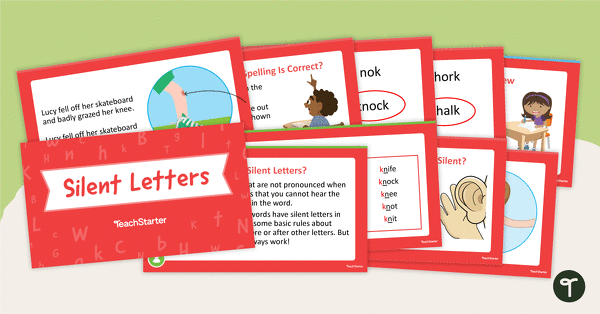
Silent Letters PowerPoint
A 24-slide editable PowerPoint presentation about silent letters.
- Plus Plan
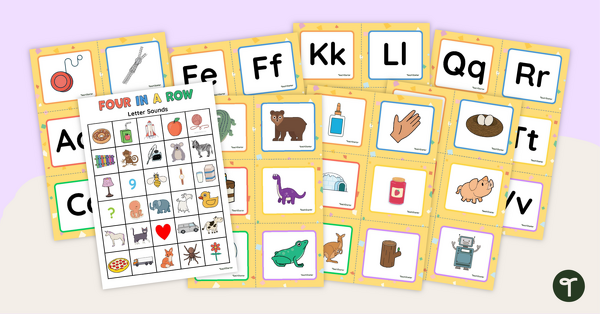
Letter Sounds Games - Four in a Row
Practice applying letter-sound correspondence with 26 picture cards, 26 letter cards, and a beginning letter sounds picture game board.
- Plus Plan
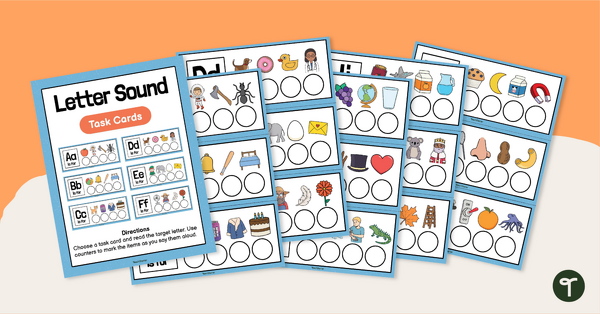
Letter Sound Recognition Activity Task Cards
Explore letter sound recognition knowledge with your students using this set of letter sound activity cards.
- Plus Plan

Beginning Letter Sounds Flashcards Game
Practice applying beginning letter sound correspondence with this set of 16 game boards and letter cards.
- Plus Plan
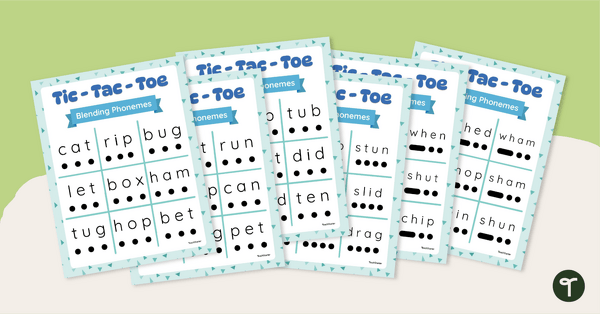
Tic-Tac-Toe Blending Phonemes Game
Develop your students' blending phonemes in CVC and CCVC words with a set of 10 Tic-Tac-Toe board games.
- Plus Plan
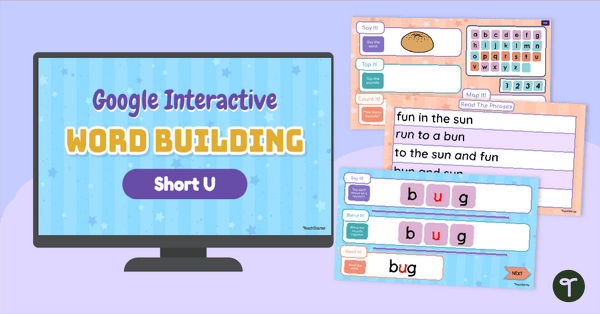
Learn to Read Short U - Daily Phonics for Kids
Use our week-long Interactive Short U Word Building Interactive to teach daily phonics lessons for kindergarten!
- Plus Plan
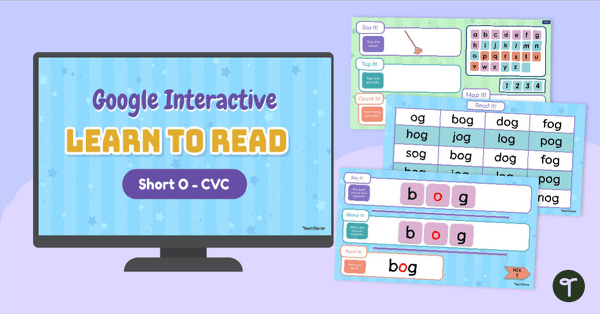
Learn to Read Short O - Daily Phonics for Kids
Teach your students to read short O words with a daily digital phonics instructional slide deck.
- Plus Plan
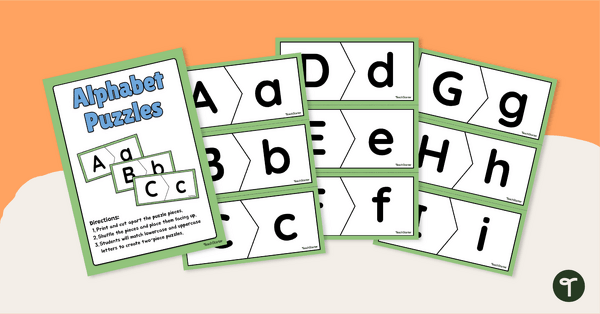
Alphabet Puzzle Uppercase and Lowercase Activity
Use this hands-on matching activity to support students' recognition of lowercase and uppercase letters.
- Plus Plan

Color by Letter Worksheet Pack
Help students with their recognition of the letters – s,a,t,p,i,n and c,k,e,h,r with this color by letter worksheet pack.
- Plus Plan
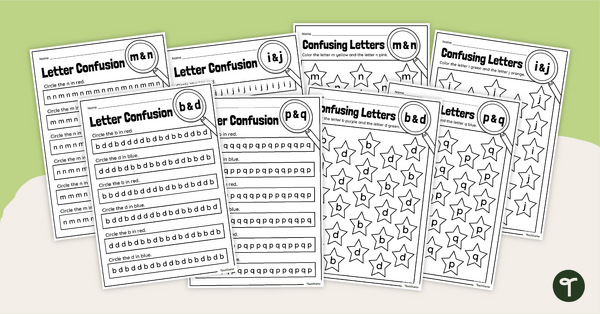
Letter Confusion Worksheets
Help students who are struggling with letter confusion with this set of 10 letter confusion worksheets.
- Plus Plan
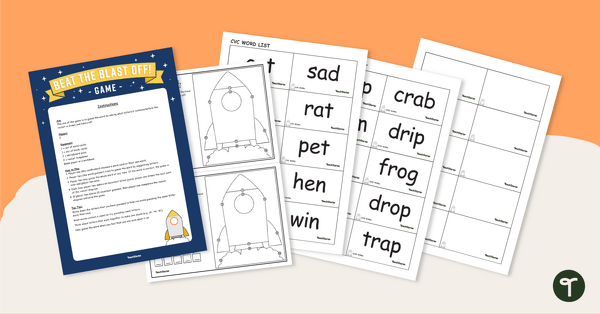
Beat the Blast Off! CVC, CVCC and CCVC Spelling Game
Use this collaborative partner game to familiarize your students with some of the most common CVC, CVCC and CCVC words.
- Plus Plan
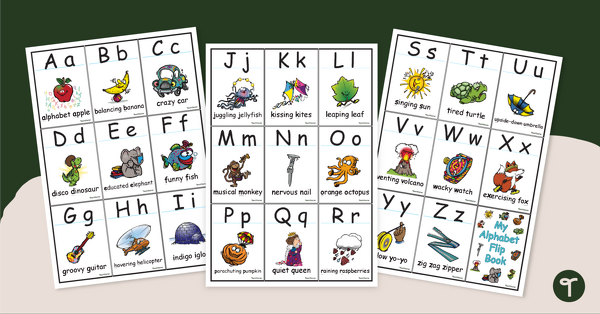
Alphabet Flashcards
Use these alphabet flashcards to help familiarize your students with the letters of the alphabet and their corresponding sounds.
- Plus Plan
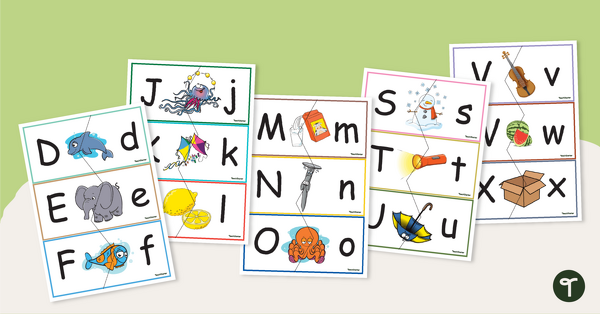
Alphabet Matching Game
Use this alphabet matching game to familiarize your students with the letters of the alphabet and their corresponding sounds.
- Plus Plan
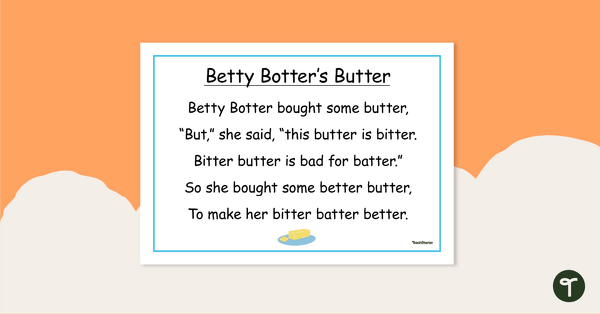
Betty Botter – Tongue Twister Poster
Use this “Betty Botter” tongue twister poster to teach your youngest students about word play and alliteration.
- Plus Plan
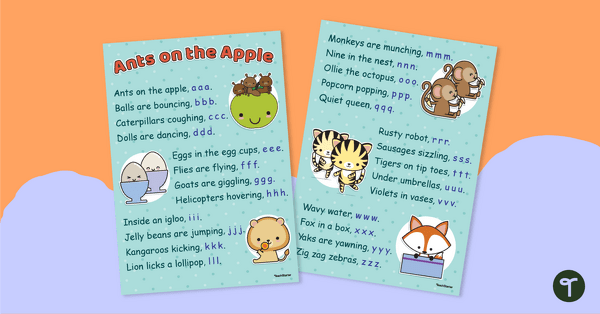
Ants on the Apple – Phonics Rhyme Posters
Use this poster featuring the phonics rhyme “Ants on the Apple” to teach your students the association between letters and their sounds.
- Plus Plan
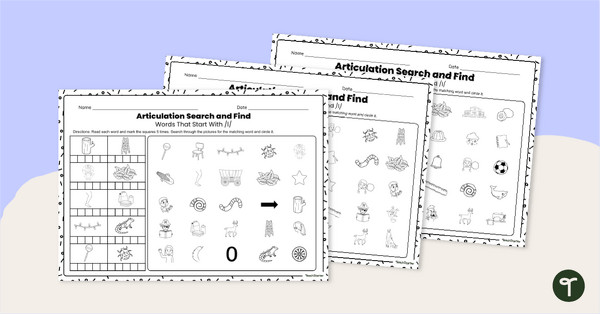
Initial, Medial, & Final L - Articulation Worksheets
Provide articulation practice with printable speech articulation worksheets for words with beginning, medial, and final /l/ sounds.
- Plus Plan
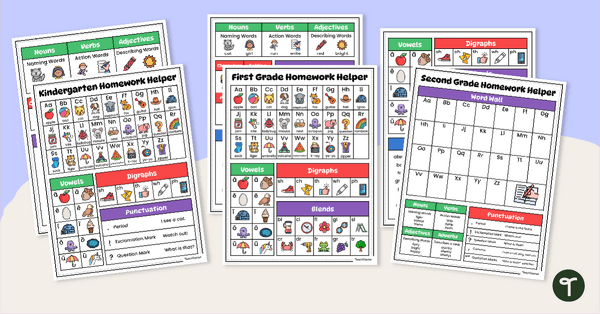
K-2 ELA Homework Helpers
Give your students handy ELA Homework Helper printables to reference when working in class or at home.
- Plus Plan
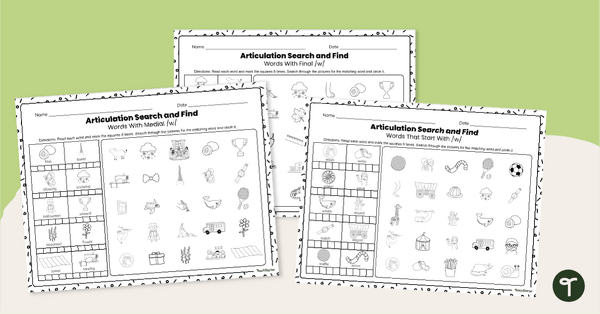
Speech Articulation Worksheets - Initial, Medial, Final /w/
Provide articulation practice with printable speech articulation worksheets for words with beginning, medial, and final /w/ sounds.
- Plus Plan
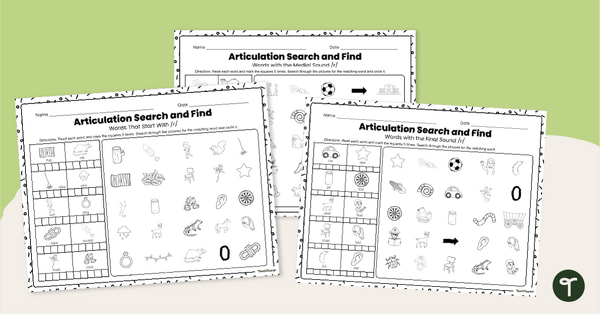
R-Words Articulation - Speech Therapy Worksheets
Provide articulation practice with printable speech articulation worksheets for words with beginning, medial, and final /r/ sounds.
- Plus Plan
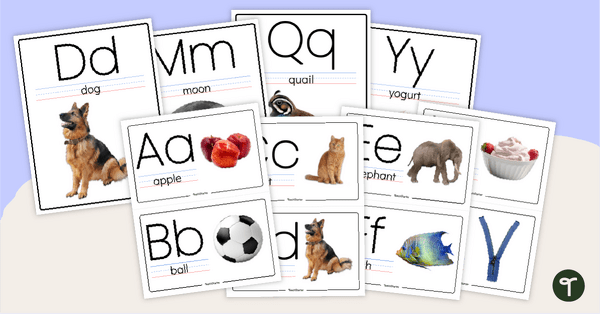
Ink-Friendly Classroom Alphabet Strip
Print and hang your own classroom alphabet strip with printable upper and lowercase letter posters with real-world images.
- Plus Plan
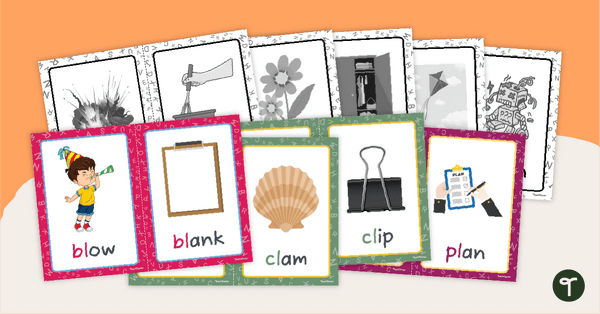
L-Blends Blending Flashcards
Practice blending l-blends with this set of blending l word cards.
- Plus Plan
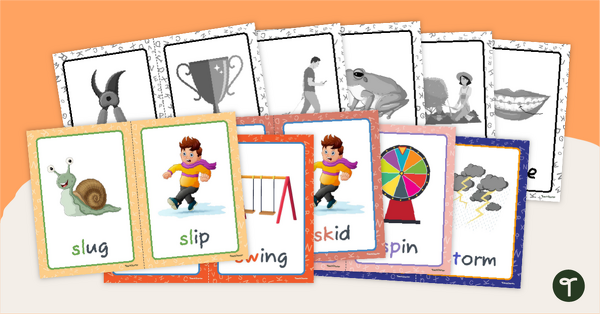
S-Blends Blending Flashcards
Practice different s blends with this set of flashcards.
- Plus Plan
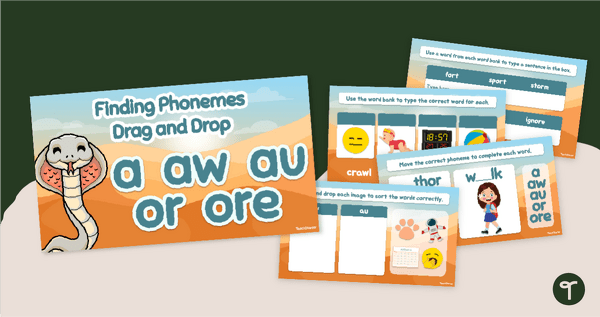
Finding Phonemes - A, AW, AU, OR, ORE Digital Learning Activity
Read and spell words using the au, aw, a , or, and ore phonemes with an interactive digital learning activity.
- Plus Plan
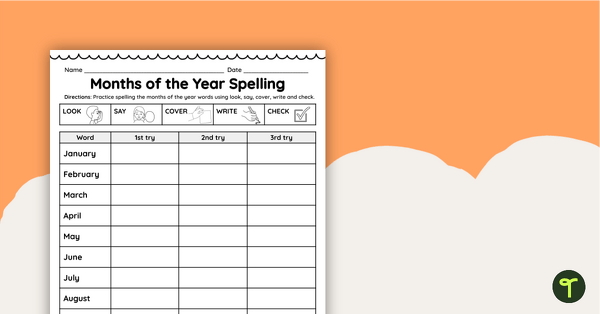
Months of the Year Spelling Worksheet
Help your students learn to spell the months of the year with a printable spelling homework sheet.
- Plus Plan
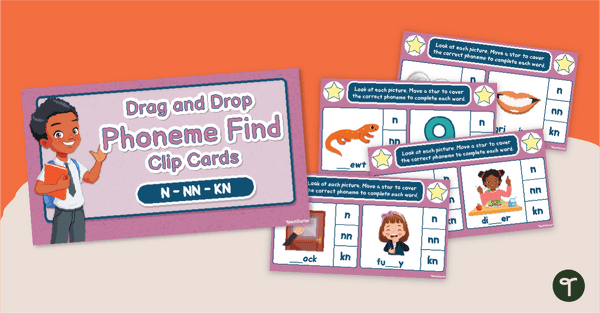
Phoneme Find - N, NN & KN - Spelling Game
Decide when to spell words with n, nn, kn to spell the /n/ sound with an engaging Interactive Phonics Activity!
- Plus Plan
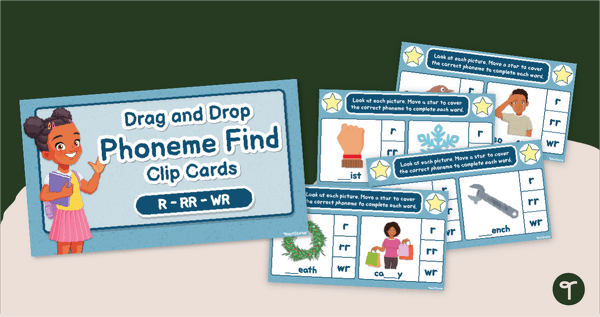
Phoneme Find - R, RR, and WR Spelling Game
Decide when to use r, rr, or wr to spell the /r/ sound with an engaging Interactive Phonics Activity!
- Plus Plan
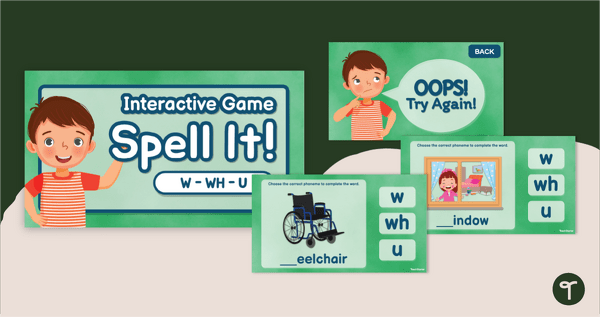
W, WH, or U? Phoneme Interactive Game
Decide when to use w, wh, or u to spell the /w/ sound with an engaging Interactive Phonics Game!
- Plus Plan
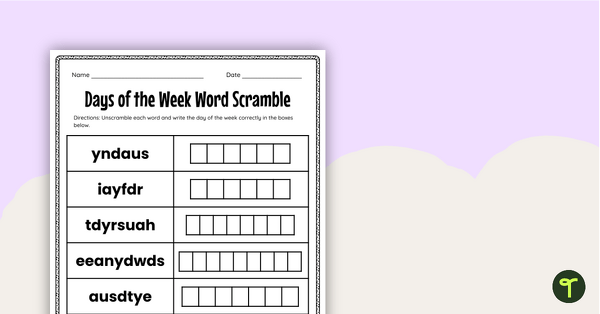
Days of the Week Word Scramble
Unscramble the names of the days in a week with a printable word scramble worksheet!
- Plus Plan
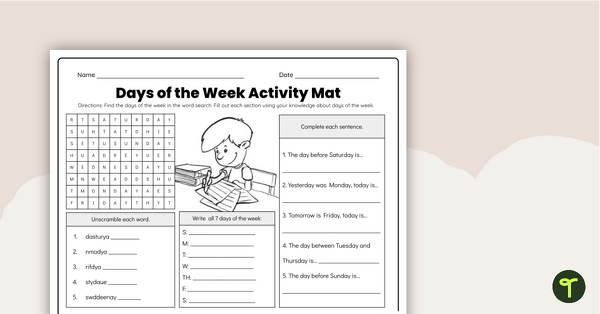
Days of the Week Activity Mat
Review the order and spelling of the days in a week with a printable Days of the Week Activity Mat!
- Plus Plan

Days of the Week - Spelling Homework Sheets
Read, write, and recognize the names of the 7 days of the week with a pack of daily spelling worksheets.
- Plus Plan
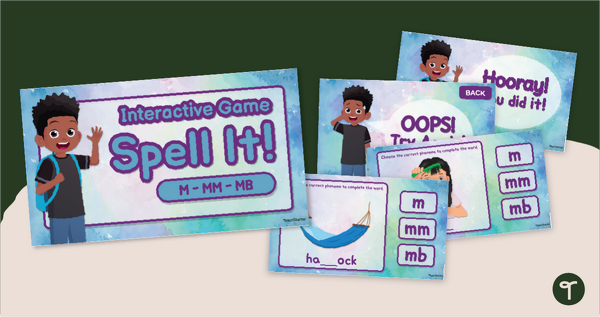
Interactive Spelling Game - Words with m, mm, mb
Use an interactive spelling game to help your students learn to spell words with m, mm, and mb correctly.
- Plus Plan
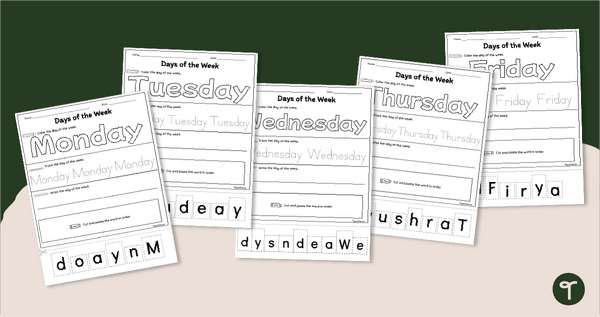
Days of the Week Spelling Worksheets
Use these Days of the Week Spelling worksheets to help your students practice reading, writing, and spelling the Days of the week.